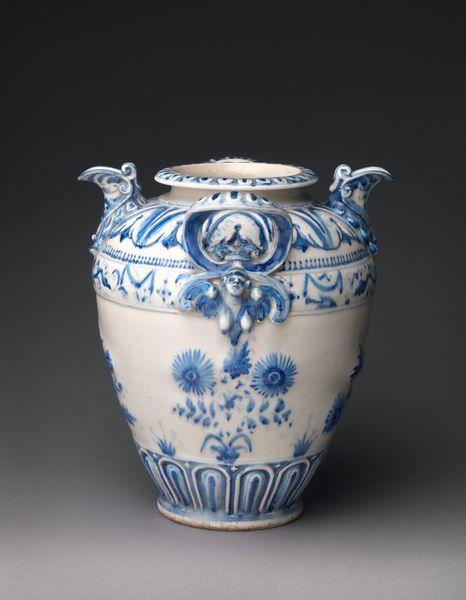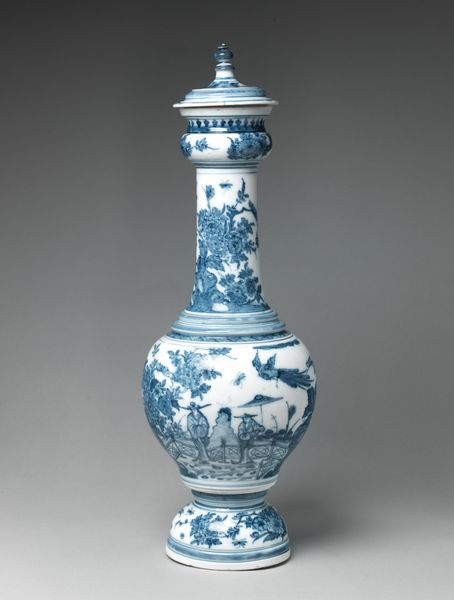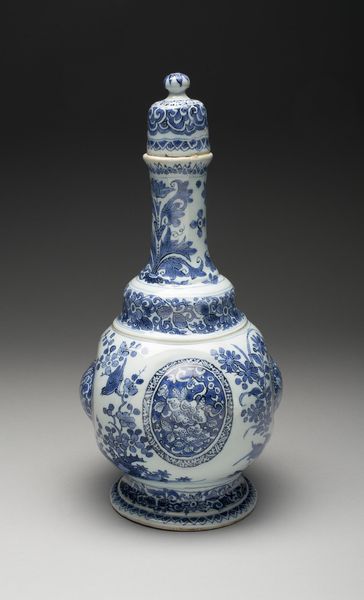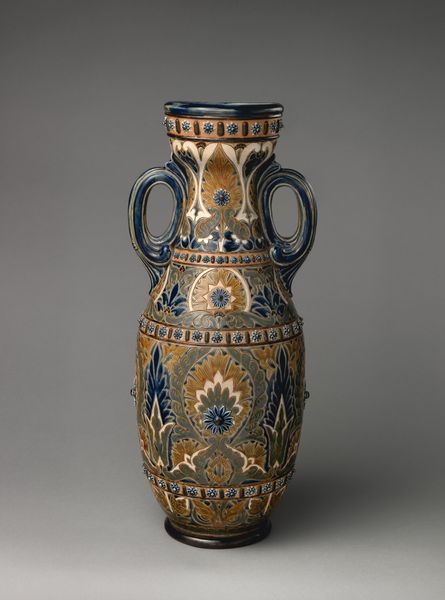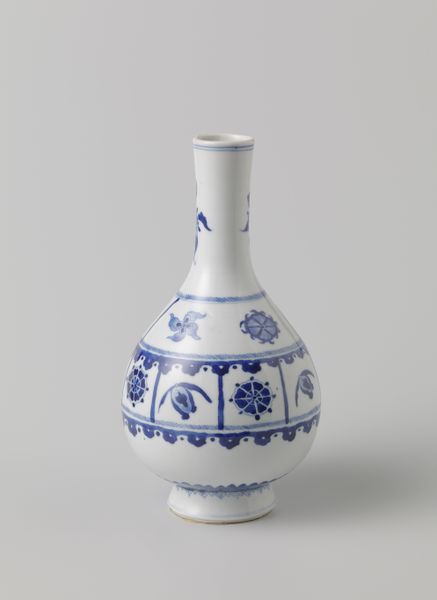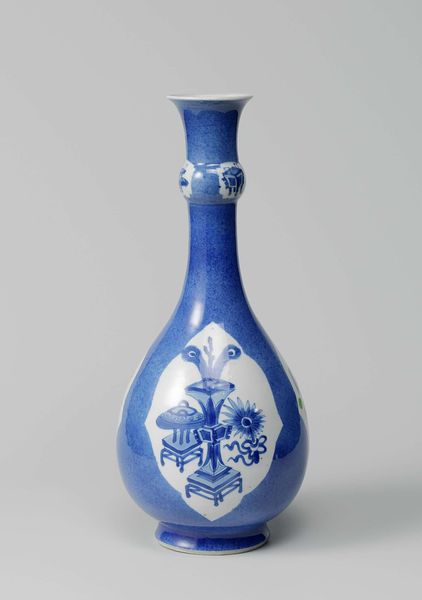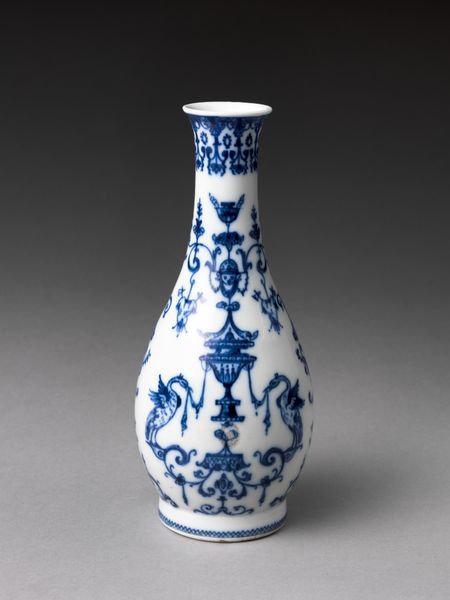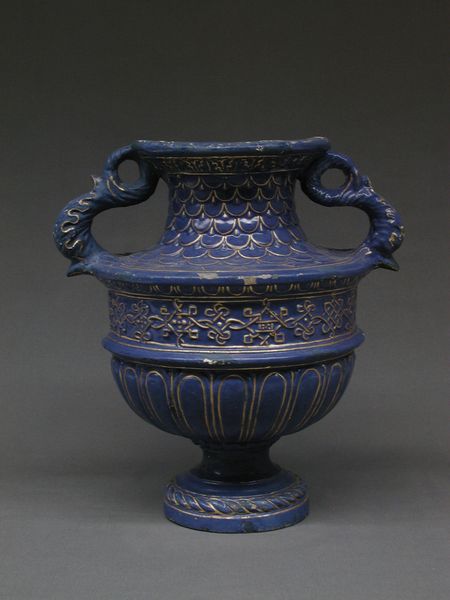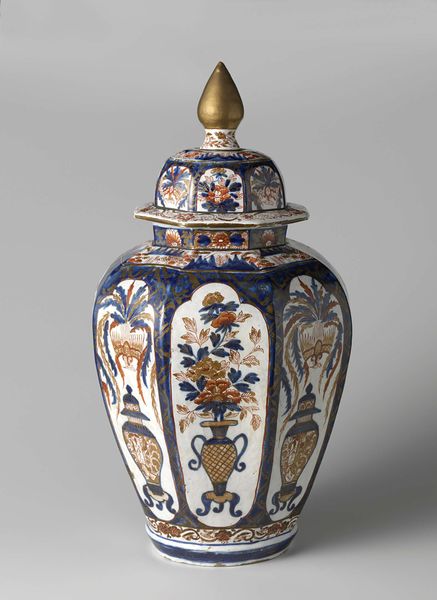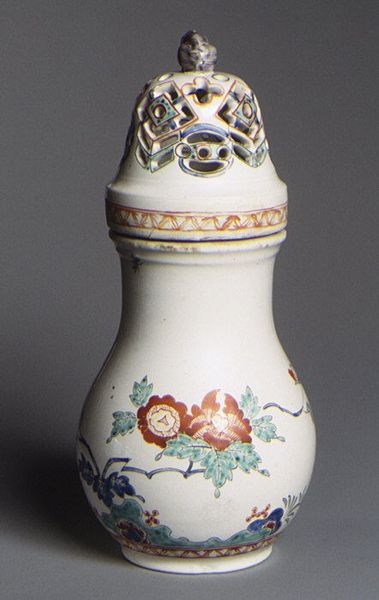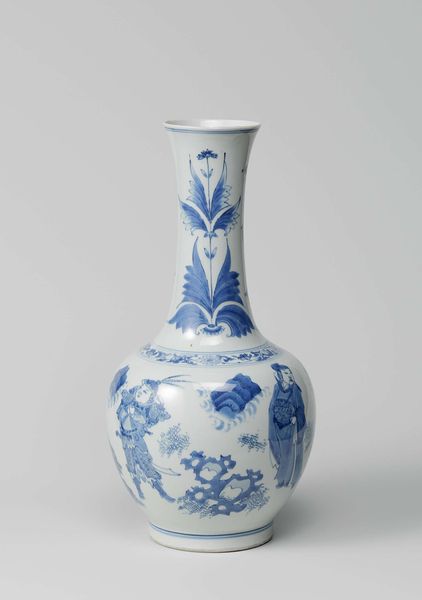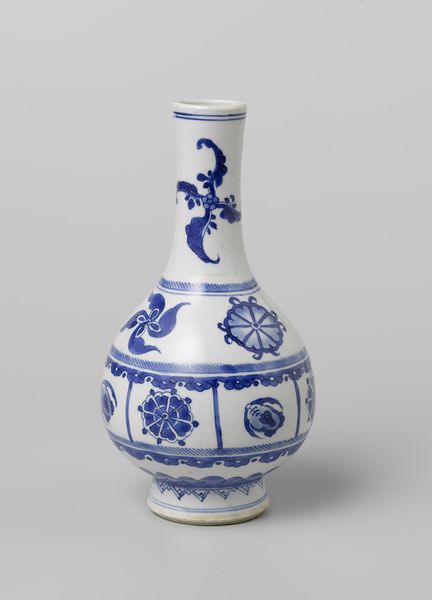
ceramic, earthenware
#
ceramic
#
earthenware
#
ceramic
#
islamic-art
#
decorative-art
Copyright: Public Domain
Curator: This little vase, currently housed at the Minneapolis Institute of Art, is identified as a "Footed Vase with Applied Ring Handles." It's an earthenware ceramic piece, believed to be from around the 15th century. Editor: My immediate reaction is... serene. That soft blue and white is just so calming. And the proportions—it's small, intimate, but the repeating patterns feel expansive, like a tiny universe. Curator: That’s a wonderful take, expansive yet contained. And in the context of Islamic art, the very idea of “decoration” is ripe for discussion. Often, we’re not just dealing with aesthetics, but with deep spiritual considerations and complex cosmologies rendered in visual form. Editor: Exactly! These seemingly simple floral patterns, or that intricate crosshatching towards the base… they're never *just* decorative, are they? Each element participates in a larger visual language, communicating ideas about paradise, order, infinity... The role of women and other underrepresented people may also need to be explored, particularly given assumptions about craft production and domestic settings, to unearth hidden histories of artistic expression. Curator: That's it, exactly! These sorts of assumptions highlight the challenges in interpreting these pieces. You know, the thing that gets me is just the incredible level of skill involved, imagine the maker imbuing these meanings in such a fluid and difficult medium. Did the maker understand this cosmological impact, or was their approach just simply intuitive, reflecting a collective worldview? And of course the handles! Practical but graceful additions. How easily does it slip between everyday object and something quite sacred. Editor: Ah, the liminal space. Love it! And that dance between intuition and intention is really intriguing. Were they consciously coding these symbols, or were they simply drawing from a shared cultural reservoir? How can we decolonize our thinking when assessing their cultural contribution? That’s why I lean towards examining the networks of knowledge and power at play, and to consider questions of authorship and agency—pushing against Eurocentric perspectives. Curator: These sorts of vases were absolutely central, they stood as signifiers of taste, markers of the ruling classes but, on the other hand, were so closely intertwined with the community and their faith. Editor: Such potent tension—object of everyday utility charged with this kind of deep meaning. It really shows that the beauty of art is really found in its functionality. Curator: A wonderful paradox and a perfect note on which to end! Editor: Agreed, till next time!
Comments
minneapolisinstituteofart almost 2 years ago
⋮
Although the shape of this vase imitates Chinese models of the Yuan dynasty (1280-1368) with attached ring handles, its flaring neck shows the potter's greater familiarity with the glass mosque lamps of the Mamluk period. The decoration of Mamluk blue-and-white pottery imitates Ming porcelains of the Hsuan-te reign (1426-35), but the inability of Middle Eastern potters to control vessel shapes and underglaze designs as well as the Chinese is apparent in this early example of blue-and-white. This rare vase was, however, considered worthy enough to be signed by its maker, Men'l'Ezz, who is known for a similar vase in the Islamic Museum in Cairo and fragments in other museum collections.
Join the conversation
Join millions of artists and users on Artera today and experience the ultimate creative platform.
